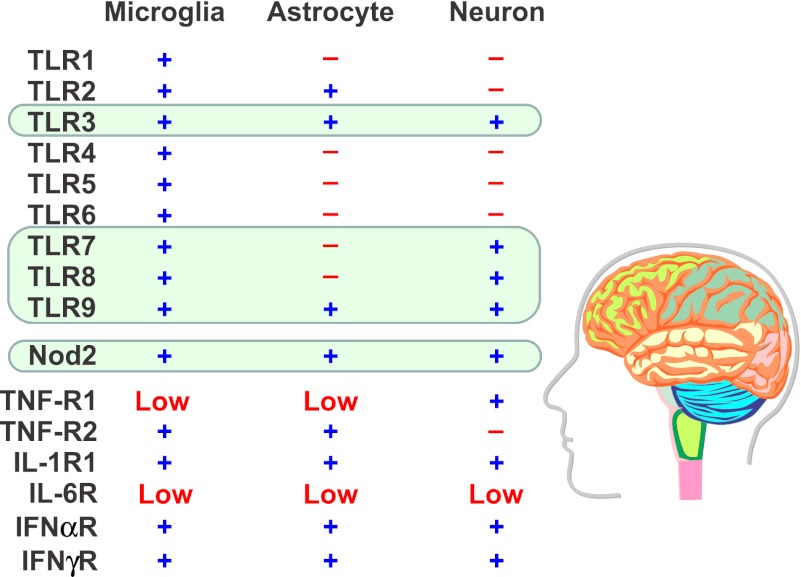Fig. 6.
Expression of pattern recognition receptors (PRRs) and proinflammatory cytokine receptors in the brain. Although most infections occur at the periphery, the cells of the central nervous system (CNS) are the ultimate mediators of changes in behavior. Receptors within the CNS for pathogen-associated molecular patterns (PAMPs) and proinflammatory cytokines are divided into two categories, intracellular (green boxes) and those that span the plasma membrane. PAMPs reaching the CNS parenchyma can directly activate microglia, which, like other monocyte-derived cells, possess a full complement of TLRs. Thus, microglia are able to respond to PAMPs or peripherally derived cytokines with a central induction of proinflammatory cytokine expression. Astrocytes and neurons have a very limited ability to respond to PAMPs. Neurons only possess intracellular TLRs and Nod2. In contrast, neurons have cell surface receptors for proinflammatory cytokines, TNFα (Bette et al., 2003), IL-1β (French et al., 1999), low expression of IL-6 (Lehtimäki et al., 2003), type I IFNα/β (Paul et al., 2007) and limited (region-specific) expression of the type II IFNγ receptor (Chesler and Reiss, 2002). The absence of most of the bacterial recognition TLRs on neurons indicates that the effects of an extracellular bacterial infection on behavior are secondary to activation of other cells of the CNS, primarily microglia. In contrast, neurons are directly responsive to cytokines.

